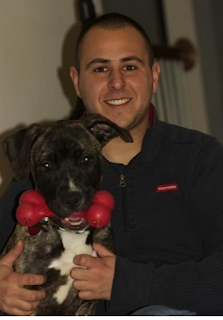This week the New York City Police Department buried one of its own, also one of our own. We should put aside a moment to mourn.
The murdered officer was Miosotis Familia, 48, reportedly the youngest of 10 children of Dominican immigrants and the first in her family to attend college. She had three children and cared for her own ailing mother.
She'd been a cop for 12 years. She was one of the people who keep my city of 8.5 million up and operating each day, in both its personal and public spheres.
She was on the midnight shift in the Bronx on Wednesday, July 5. Her killer, 34-year-old Alexander Bonds, was a lowlife and prison parolee with untreated mental illness. He posted threatening anticop rants on Facebook.
The night of the murder he walked up to her police vehicle and fired once through the window, shooting Officer Familia in the head. Police shot him dead soon after. Here is NYPD Commissioner James O'Neill at her funeral:
Regular people sign up to be cops. They sign up for this job of protecting strangers knowing the inherent risks. . . . But not one of us ever agreed to be murdered in an act of indefensible hate. Not one of us signed up to never return to our family or loved ones. So where are the demonstrations for this single mom who cared for her elderly mother and her own three children?"
The 4,000 mourners stood and burst into sustained applause. Mr. O'Neill continued: "There is anger and sorrow, but why is there no outrage? Because Miosotis was wearing a uniform? Because it was her job? I simply do not accept that. Miosotis was targeted, ambushed and assassinated. She wasn't given a chance to defend herself. That should matter to every single person who can hear my voice in New York City and beyond."
The 4,000 mourners stood and burst into sustained applause. Mr. O'Neill continued: "There is anger and sorrow, but why is there no outrage? Because Miosotis was wearing a uniform? Because it was her job? I simply do not accept that. Miosotis was targeted, ambushed and assassinated. She wasn't given a chance to defend herself. That should matter to every single person who can hear my voice in New York City and beyond."
It should.
Mr. O'Neill: "When we demonize a whole group of people, whether that group is defined by race, by religion or by occupation, this is the result. I don't know how else to say it. This was an act of hate, in this case against police officers—the very people who stepped forward and made a promise to protect you day and night."
We are not paying enough attention to what is happening to the police throughout the country. As this was being written, Newsweek reported the National Law Enforcement Officers Memorial Fund claims that the number of officers killed in the line of duty was up 30% for the 12 months ending June 30, compared with the preceding year.
That number doesn't include Miosotis Familia. The head of the Memorial Fund said: "Officers have been targeted for the job they do, shot and killed, or hit with vehicles." It should be a major, sustained national story when cops are killed for being cops. Yet each incident never gels into a theme. The media caravan moves on. Orwell spoke of forcing inconvenient stories down the memory hole. It is a feature of our age that we now force them down the hole before they've had a chance to become a memory.
 |
| Peter Vega, Genesis Villella and Delilah Vega mourn their mother, Officer Miosotis Familia at the World Changers Church in the Bronx, July 11. Photo by Associated Press |





















